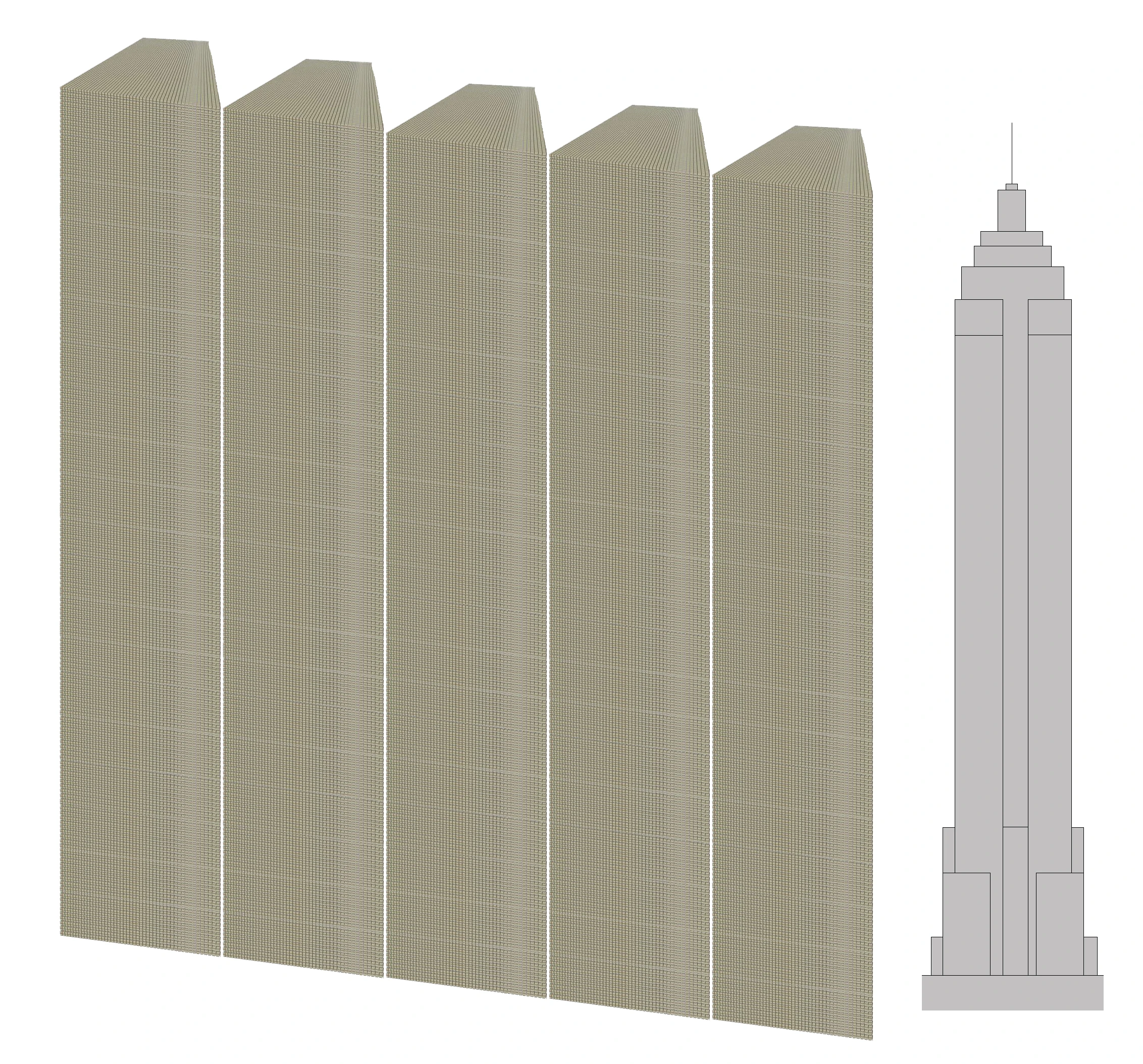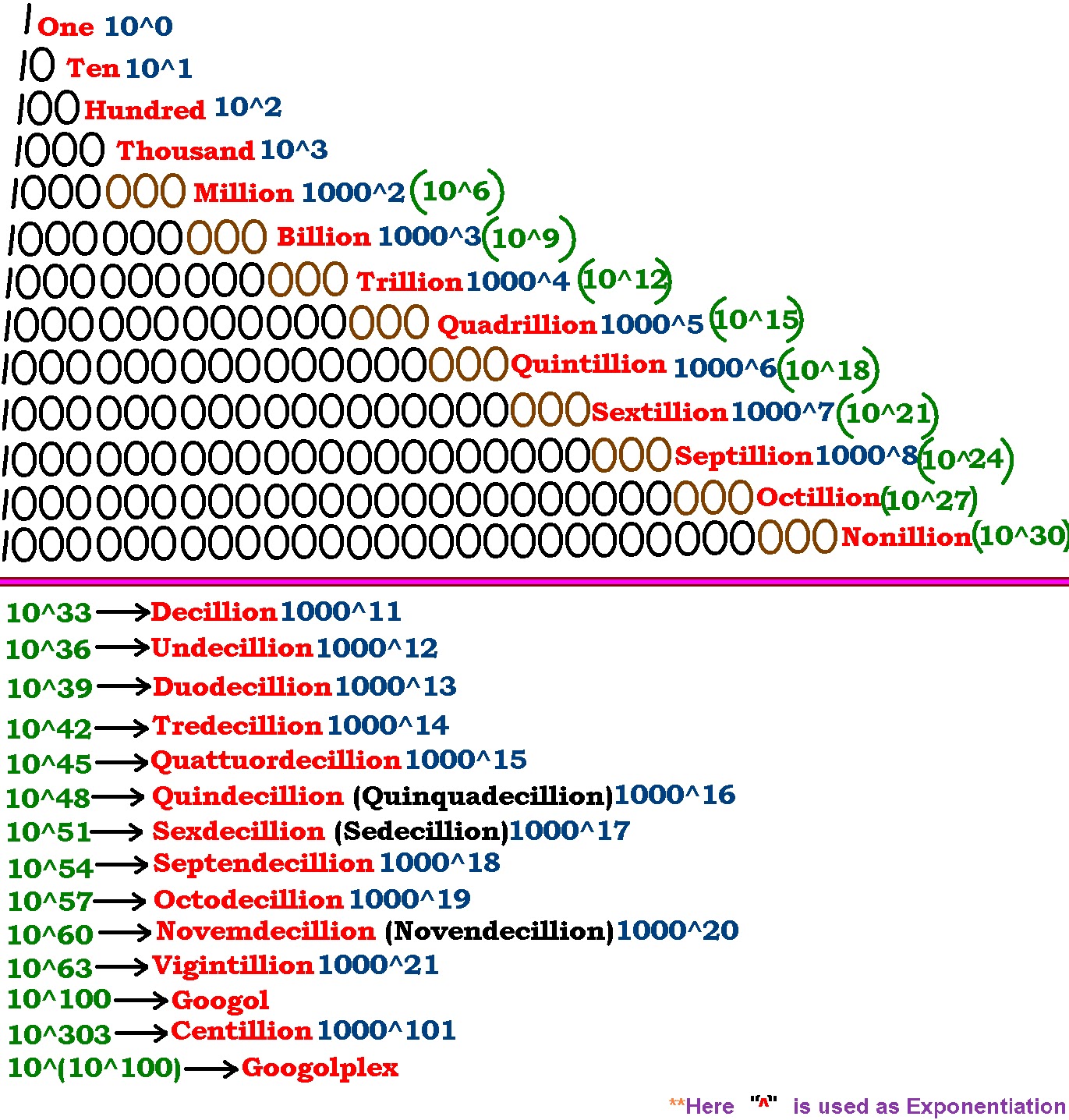What's Above Quadrillion? Exploring The Mega Numbers Beyond
Ever wondered what comes after quadrillion? You’re not alone. The world of large numbers can feel like diving into an endless galaxy, where the scale just keeps expanding. Whether you’re a math enthusiast, a curious mind, or simply someone who loves fun facts, understanding the numbers beyond quadrillion is both fascinating and mind-blowing. So, let’s jump right in and unravel the mystery of what’s above quadrillion!
Numbers are more than just figures on a page. They’re the building blocks of our universe, shaping everything from the smallest atom to the vastness of space. As we move past quadrillion, we enter a realm where numbers become almost poetic in their complexity. But don’t worry—we’ll break it down so it feels less intimidating and more like a cool journey through the land of digits.
This article isn’t just about throwing big numbers at you. It’s about making sense of them, understanding their significance, and even having a bit of fun along the way. After all, who wouldn’t want to know that there’s a number called a “googol” or that a “centillion” is so big it might make your head spin?
- Discovering Mia Kink Dd A Journey Of Authenticity And Creativity
- Exploring Ellen Degeneres Age Career And Lasting Legacy
Understanding Quadrillion: A Quick Recap
Before we leapfrog into the stratosphere of numbers above quadrillion, let’s take a moment to understand what quadrillion really means. In the short scale system used predominantly in the U.S. and many other countries, a quadrillion is equal to 1 followed by 15 zeros (1,000,000,000,000,000). If you’re still trying to wrap your head around it, think of it this way: it’s a million times a trillion. Crazy, right?
Here’s a quick breakdown of how we get to quadrillion:
- Thousand = 1,000
- Million = 1,000,000
- Billion = 1,000,000,000
- Trillion = 1,000,000,000,000
- Quadrillion = 1,000,000,000,000,000
Now that we’ve got that straight, it’s time to push the boundaries and explore what’s beyond quadrillion.
- Discover The Charm Of Spring Grove Pa 17362
- Aaron Rodgers The Iconic Nfl Quarterback And His Super Bowl Legacy
What Comes After Quadrillion? Quintillion and Beyond
Once you’ve mastered quadrillion, the next stop on our numerical journey is quintillion. A quintillion is 1 followed by 18 zeros (1,000,000,000,000,000,000). It’s like quadrillion’s cooler older sibling, hanging out in the big leagues of numbers. But the fun doesn’t stop there. After quintillion, we have sextillion, septillion, octillion, and so on.
Here’s a quick peek at some of the numbers that come after quadrillion:
- Quintillion = 1,000,000,000,000,000,000
- Sextillion = 1,000,000,000,000,000,000,000
- Septillion = 1,000,000,000,000,000,000,000,000
- Octillion = 1,000,000,000,000,000,000,000,000,000
These numbers are so massive that they’re almost impossible to visualize in everyday life. But hey, that’s part of the charm, right?
How Big Are These Numbers Really?
Let’s put it into perspective. Imagine trying to count to a quadrillion. Even if you counted one number per second without stopping, it would take you over 31 million years to reach it. Now think about quintillion or sextillion. We’re talking about numbers so large they could fill entire galaxies if written out in full.
Here’s another fun fact: the observable universe contains an estimated 10^80 atoms. That’s a 1 followed by 80 zeros. While this number isn’t as big as some of the ones we’ll explore later, it gives you an idea of just how enormous these figures can get.
Breaking Down the Scale
It’s easy to get lost in the zeros, so let’s break it down a little further:
- A quintillion seconds is roughly 31.7 billion years.
- A sextillion seconds is over 31.7 trillion years.
- A septillion seconds? Well, that’s longer than the age of the universe itself!
Numbers like these remind us just how small we are in the grand scheme of things. But they also inspire awe and wonder, showing us the infinite possibilities of the universe.
Enter the Googol: A Number So Big It’s Almost Unreal
Now we’re talking serious business. A googol is 1 followed by 100 zeros. That’s right—100 zeros! It’s such a massive number that it inspired the name of a certain tech giant you might have heard of. But even with its impressive size, a googol is just the beginning of the truly colossal numbers.
Here’s where things get interesting: a googolplex is 1 followed by a googol of zeros. That’s so big that writing it out would require more space than the entire observable universe provides. Mind. Blown.
Why Do These Numbers Matter?
While you might not encounter a googol or a googolplex in your daily life, these numbers have real-world applications in fields like physics, astronomy, and computer science. They help scientists understand the vastness of the universe, the complexity of algorithms, and the limits of human knowledge.
The Centillion: The Largest Named Number
Finally, we arrive at the centillion, the largest named number in the English language. A centillion is 1 followed by 303 zeros in the short scale system. In the long scale system used in some European countries, it’s 1 followed by 600 zeros. Either way, it’s a number so big it’s almost impossible to comprehend.
But here’s the thing: there’s no limit to how big numbers can get. Beyond centillion, mathematicians use scientific notation to express numbers that are too large to write out fully. It’s a reminder that the world of numbers is infinite, just like the universe itself.
Fun Facts About Big Numbers
Let’s sprinkle in a few fun facts to keep things interesting:
- The word “googol” was coined by a 9-year-old boy named Milton Sirotta in 1938.
- The largest known prime number as of 2023 is 2^82,589,933−1, which has over 24 million digits.
- Some cultures have names for even larger numbers, like the Indian system’s “mahashankh,” which is 1 followed by 42 zeros.
Applications of Large Numbers in Real Life
So, why do we care about numbers this big? While they might seem abstract, large numbers have practical applications in various fields:
- Cryptography: Large prime numbers are essential for creating secure encryption algorithms that protect your data online.
- Astronomy: Scientists use large numbers to measure distances in space, estimate the number of stars in the universe, and calculate the age of celestial bodies.
- Computer Science: Big data and machine learning algorithms rely on handling massive datasets, often represented by numbers with many zeros.
These applications highlight the importance of understanding large numbers, even if we don’t encounter them in our everyday lives.
Challenges in Comprehending Large Numbers
It’s no secret that humans struggle to grasp the scale of very large numbers. Our brains are wired to think in terms of tangible, relatable quantities. When faced with numbers like quadrillion or beyond, it’s easy to feel overwhelmed. But there are ways to make sense of them:
- Use analogies and comparisons to relate large numbers to familiar concepts.
- Visualize them using graphs, charts, or other tools.
- Break them down into smaller chunks to make them more manageable.
By doing so, we can begin to appreciate the magnitude of these numbers without getting bogged down by their complexity.
How Do Scientists Communicate These Numbers?
Scientists often use scientific notation or powers of ten to simplify large numbers. For example, instead of writing out a googol as 100 zeros, they express it as 10^100. This makes it easier to work with and understand, even for non-mathematicians.
What’s Above Centillion? Exploring Infinity
As we’ve seen, there’s no end to how big numbers can get. Beyond centillion, mathematicians use concepts like infinity to describe numbers that go on forever. Infinity isn’t a number in the traditional sense, but it’s a useful tool for understanding the limitless nature of mathematics.
Here are a few mind-blowing facts about infinity:
- There are different “sizes” of infinity, known as cardinalities.
- Infinity plus one is still infinity.
- Some infinities are “larger” than others, depending on how they’re defined.
These ideas challenge our understanding of numbers and push the boundaries of what’s possible in mathematics.
Infinity in Everyday Life
While infinity might seem like an abstract concept, it appears in surprising places:
- The concept of infinity is central to calculus, which is used in engineering, economics, and many other fields.
- Artists and philosophers have long been fascinated by infinity, using it as inspiration for their work.
- Even something as simple as a mirror reflection can create the illusion of infinity.
Conclusion: The Infinite Journey of Numbers
So, what’s above quadrillion? The answer is simple yet profound: an endless array of numbers that stretch far beyond our imagination. From quintillion to googol, and from centillion to infinity, the world of large numbers is a testament to the beauty and complexity of mathematics.
As you’ve learned, these numbers aren’t just abstract concepts. They have real-world applications that impact everything from cryptography to astronomy. By understanding them, we gain a deeper appreciation for the universe and our place within it.
Now it’s your turn. Leave a comment below and tell us which big number blew your mind the most. Or, if you’re feeling adventurous, try counting to a quadrillion (just kidding—don’t do that!). Whatever you choose, remember that the world of numbers is always expanding, just like the universe itself.
Table of Contents
- What Comes After Quadrillion? Quintillion and Beyond
- How Big Are These Numbers Really?
- Enter the Googol: A Number So Big It’s Almost Unreal
- The Centillion: The Largest Named Number
- Applications of Large Numbers in Real Life
- Challenges in Comprehending Large Numbers
- What’s Above Centillion? Exploring Infinity



Detail Author:
- Name : Tyree Miller II
- Username : jerad77
- Email : harvey.roman@gmail.com
- Birthdate : 1981-06-02
- Address : 321 Schimmel Knolls Suite 770 West Flavio, WY 05331
- Phone : (463) 490-0382
- Company : Keeling LLC
- Job : Rigger
- Bio : Nihil quam id occaecati neque quia nisi. Totam consectetur sapiente adipisci qui. Dolore hic sed fugit dolore qui. Aut voluptas nisi saepe exercitationem dolorum esse enim.
Socials
linkedin:
- url : https://linkedin.com/in/alejandrinbruen
- username : alejandrinbruen
- bio : Neque libero quo iusto.
- followers : 1112
- following : 2016
tiktok:
- url : https://tiktok.com/@alejandrin_bruen
- username : alejandrin_bruen
- bio : Nemo harum voluptatem vel assumenda omnis consectetur.
- followers : 3160
- following : 857
instagram:
- url : https://instagram.com/alejandrin_id
- username : alejandrin_id
- bio : Consequatur aut pariatur accusantium corporis cupiditate. Eius molestiae iusto nihil.
- followers : 5210
- following : 2268
facebook:
- url : https://facebook.com/bruen1987
- username : bruen1987
- bio : Doloribus qui et ratione maiores dolorum ipsum at.
- followers : 2933
- following : 991
twitter:
- url : https://twitter.com/bruena
- username : bruena
- bio : Accusamus ut praesentium ea quod aliquam. Quod aliquid omnis consectetur deserunt. Magnam voluptas voluptatem deserunt assumenda ut quod.
- followers : 1441
- following : 933